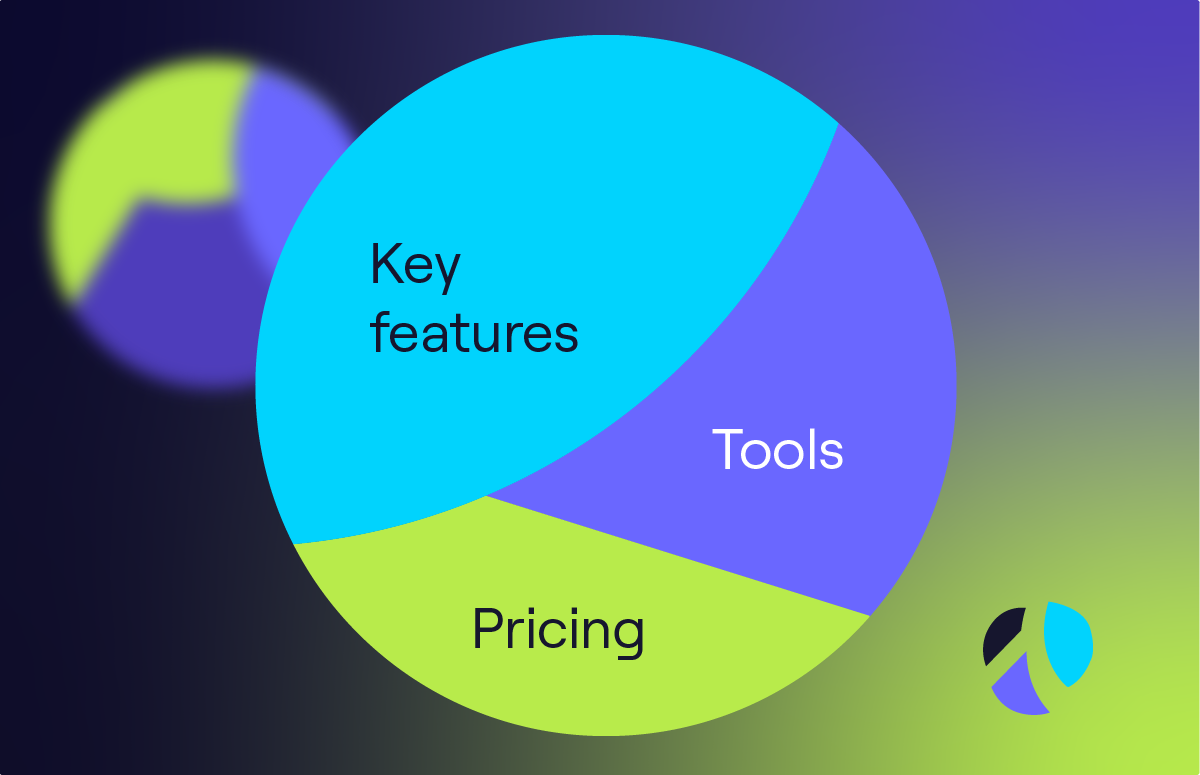Leads to Deals: How Marketing and Sales Can Work Together
8 steps for marketing and sales to work together:
The sales and marketing departments of organisations play vital roles in both nurturing leads and leveraging conversions.
So why do they struggle to communicate effectively with one another?
Both departments are familiar with sales funnels. While marketing teams attract new leads and work on growing brand exposure, it’s the role of sales teams to leverage those leads and convert them into customers.
This makes it extremely advantageous for businesses to encourage their marketing and sales departments to work together. Adopting a symbiotic approach can help teams unify their efforts and work towards shared goals.
Despite this, interdepartmental communications can be difficult for both sales and marketing. Sometimes, it’s hard for them to form a mutual understanding, particularly on a B2B basis.
For many SMEs, silos create damaging comprehension gaps between departments that can lead to a flawed lead nurturing process and widespread losses of achievable conversions.
The solution to these losses is simple. It’s possible to optimise the lead generation process, leading to more close-knit sales and marketing teams focused on shared goals.
Let’s find out more 👇
What are the benefits of sales and marketing working together?
Silos are a constant threat that can adversely impact business performance throughout an entire organisation, particularly in departments that are closely aligned like marketing and sales.
The risks and rewards associated with interdepartmental communication among marketing and sales teams are clear. Statistics suggest that sales and marketing alignment can bring 38% higher sales win rates, while poor alignment can cost businesses at least 10% of their annual revenue.
But how can businesses break down the divisions between sales and marketing departments while encouraging teams to work effectively towards common goals?
Let’s take a deeper look into eight key approaches to encourage greater collaboration and leverage stronger sales rates as a result 👇
1. Prioritise open communication
Open communication empowers teams to gain a more fluent understanding of the respective challenges, expectations, and needs, that other departments experience. This can be a valuable tool in building more effective collaboration between sales and marketing.
Building open communication between sales and marketing departments isn’t easy. Natural bonds are hard to build between teams that don’t regularly spend time together, and the rise of remote work has made face-to-face communication more uncommon throughout many industries.
However, setting up regular meetings can help to bring teams together over time and allow them to better understand the challenges and goals that they’re working with. Whether these meetings are in-house or on video conferencing software, they can help employees find common ground across departments that can help to align their efforts.
With this in mind, it’s worth scheduling regular cross-departmental meetings to discuss campaigns, leads, feedback, and ongoing strategies. Meeting frequency can vary from organisation to organisation, but it’s certainly worth aiming for one meeting per month at least.
Another important approach is to create an avenue for more informal communication between sales and marketing teams. This can help marketers to share their ideas with sales and vice versa. This open communication fosters fresh insights throughout departments and can help both teams achieve their goals more efficiently.
By allocating time for more informal communication at the end of meetings, such as discussing weekend plans or new films to watch, it’s possible to help departments feel more comfortable communicating with one another. Team building days can also help employees to become more approachable to other departments.
One way to action this would be to ask teams from each department to nominate representatives who can unite to arrange charity events, exercises, and various other extra-curricular activities that could help departments build their communication skills.
2. Share goals and insights
At this stage, it’s worth noting that sales and marketing departments are fundamentally different from one another. They generally monitor different metrics and score their performance in different ways.
This makes true alignment extremely difficult if you’re seeking to build bridges with no unified goals.
If your sales team is spread across a range of individuals seeking to meet a personal sales quota, while marketing teams are looking to conduct multivariate testing on webpage engagement, major breakdowns in communication will likely happen.
While these processes are important for each department individually, they won’t mean much when shared beyond departments. It’s for this reason that open communication must be promoted through a series of common business goals that directly break down silos.
Factors like brand awareness, lead generation, and capitalising on business opportunities are essential throughout both marketing and sales, and both departments can align to reach these common goals.
Shared performance metrics like conversion rates and lead value can help teams to understand their impact on an interdepartmental basis, and to improve performance in a way that can bring more intrinsic value to the company as a whole.
3. Bring departments together with joint assignments
Because functions within marketing and sales departments are easy to align, organisations need to create new opportunities for marketers and sales specialists to work together.
While meetings can help to build open communication between the departments, joint assignments can empower teams to better understand each other’s thought processes, goals, and strategies.
One quick solution here could be to integrate brand managers and researchers into sales calls. They can also be invited to create alternate solutions for customers toward the top of the sales funnel and sit in on account-planning meetings on occasion.
Likewise, sales teams can use their insights to help devise marketing plans and sit in on product-planning meetings. Running new advertising campaigns and sales-promotion plans through both departments can also offer greater levels of insight and a more holistic understanding of an organisation’s strategies and goals.
4. Utilise CRM tools for stronger collaboration
Using a customer relationship management (CRM) tool can help foster greater levels of collaboration between marketing and sales teams.
The beauty of CRM software is that it can create a centralised record for every interaction an organisation has with a client or customer. Whether it’s through social media, email, phone, or an in-person meeting, CRM tools offer cross-departmental transparency throughout the buyer journey.
Utilising a CRM means that sales and marketing teams can align their activities and remove existing silos when it comes to collaborating on closely-aligned projects.
Many leading platforms today not only offer CRM integration but include AI technology that can benefit sales and marketing departments on a comprehensive level.
With this in mind, it’s certainly worth exploring AI-driven options that can unite CRM software and campaign optimisation. These tools can make seamless customer journeys happen!
What can marketing learn from sales? Find out in this video from Cognism's sales and marketing leaders 👇
5. Align lead notification systems
For sales to succeed, it needs to understand how potential customers interact with marketing materials. This knowledge demonstrates how responsive prospects are to products and what they think about a brand’s image.
While it’s likely that your sales department will have plenty of access to analytics and metrics that determine a customer’s conversion and cart abandonment rates, sales teams may be oblivious that a marketing campaign is even underway as new leads arrive in-store or on-site.
This is a folly. Most prospects are more likely to show their peak interest when a marketing campaign is underway; this provides sales teams with a key window of opportunity to ramp up their efforts to secure a conversion.
The best idea is to set up a unified system that provides sales teams with real-time alerts regarding lead interactions with marketing materials. This can help brands reach out to prospects at the most opportune time to secure a purchase or sign up.
These alert systems can include alerts on engagement, where sales teams are informed of whenever a lead interacts with emails, downloads content, or visits optimised landing pages.
Alerts can also offer behavioural insights based on the B2B content that leads are interacting with, leverage instant follow-ups at a lead’s moment of interest, and lower the friction between the moment of marketing interaction and sales outreach.
6. Work on a common language
Breaking down long-term silos is easier said than done.
When teams are accustomed to their own internal sets of qualifiers for marketing and sales leads, opening these metrics up to new departments can lead to translation issues or even strong disagreements over house styles.
Here, the dangers of misalignment can result in missed opportunities among high-value qualified leads. With this in mind, setting up a lead scoring system and shared definitions is essential in fostering a more holistic approach to marketing operations and sales cycles.
Once again, open communication here is essential; you’ll need to establish a conducive environment where sales and marketing communicate universally recognised information.
By emphasising the importance of communicating helpful information, you can avoid both teams becoming stuck amidst a sea of jargon or irrelevant data that doesn’t hold value beyond their respective departments.
Lead scoring and shared definitions simplify how information can be prioritised and shared between departments. They encourage higher levels of team collaboration without the danger of either marketing or sales becoming lost in translation.
To action this, it’s worth creating a lead scoring system. With this in place, you can ensure both teams are aware of the required criteria for evaluating prospects.
If some sales reps are tempted to use a non-standardised scoring system, you can correct this through clearly defined terms that encourage all parties to follow a specific understandable process.
Over time, this scoring system will become standardised and a source of improved communication and collaboration for your teams. It will be a huge benefit to your sales and marketing plans!
7. Break down silos with strategic hires
Canny hiring can also help to break down silos between your sales and marketing departments.
Start by assessing your current recruitment process. Your goal is to add professionals who have some experience working in both sales and marketing.
During the hiring process, ask candidates about their sales and marketing background. Do they have transferable skills and would they be naturally adept at bridging the gap between departments and understanding their respective goals?
It could also be advantageous to simulate siloed scenarios where an issue is spanning both departments. For instance, you could suggest that a marketing campaign has failed to secure its expected conversion rates within its target audience. How would the candidate work to achieve a cross-departmental solution?
These multi-skilled hires can be crucial in building avenues for communication between departments.
8. Unify your customer messaging
In addition to open communication and aligning departmental goals, you should also look to unify your customer messaging. You want to ensure consistent interactions with your leads.
Disparities between brand presentation or departmental responses can be alienating for prospective customers and may undermine your brand image or values.
With this in mind, ensure that you communicate your customer messaging within cross-departmental meetings. Always underline how you want your sales and marketing people to present the business.
While marketing teams can provide strong industry insights, relying on this alone in building your customer messaging can be difficult. Likewise, sales teams can receive first-hand feedback and insights from customers which makes collaboration in this field essential.
It’s worth setting up a communication channel for department leaders. Use it to:
- Share and refine suggestions for offers/opportunities.
- Identify the right customer messaging and brand values to help sell your products.
Combining your marketing team’s industry research and know-how with your sales team’s first-hand customer experience can pave the way for consistent customer messaging that’s effective every time.
Sales and marketing working together: the last word
Creating a strong marketing process relies on insights from sales teams. When departments communicate openly, marketing strategies become both creative and effective, delivering unified messages and smoother buyer journeys for customers.
Encouraging regular interaction and communication between teams with diverse experiences can improve sales funnels and increase customer satisfaction.
With sales and marketing alignment linked to a 38% boost in sales win rates, it’s crucial to unify departments for better lead conversion, especially in today’s competitive landscape.



